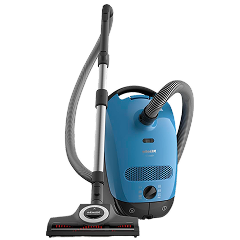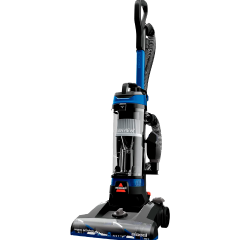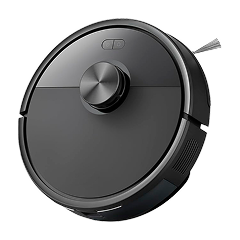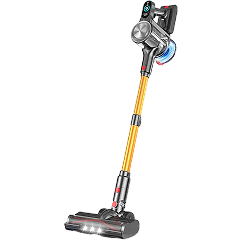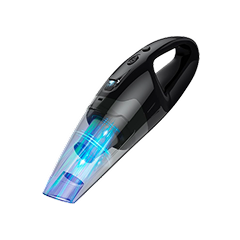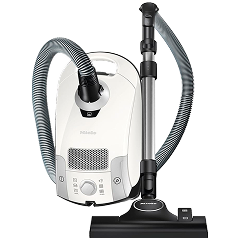If you ever feel like your countertops, kitchen table, and car seats are always dirty, you need to look into getting a handheld vacuum. These are smaller vacuums that can be placed just about anywhere with an outlet and are always at hand when you need them.
The problem is that you want one that suits the situation. For example, a handheld vacuum cleaner that’s designed to clean between car seats is sub-optimal for a kitchen situation. You can figure out what’s right for you by choosing a model with features that specialize in common messes in your home.
I’ve been a vacuum tester and reviewer for over a decade, and this is what I’ve learned about handheld vacuum cleaners.
How to Choose the Right Handheld Vacuum
Charging options
The method of charging sets a lot of the baseline expectations for how you’ll use your handheld vacuum. A handheld vacuum that is 12 volt compatible, sometimes called a cigarette lighter, can be kept in your car. One that has a USB adapter can plug into your desktop or laptop.
Beyond whether or not you can even charge the handheld, you should also consider the style of the charge. Some handheld models have a charging plate that the vacuum sits atop. This allows for easier access, but it also has a larger footprint than just a DC jack.
Battery life
Battery life equates to the time you can use the cordless to clean. When brands list the battery life, it’s usually based on the lowest settings. In my experience, you can get the battery on the highest settings by halving the listed time. So, a 20-minute battery life becomes 10 minutes on the highest setting.
What’s considered a good battery life depends on the size of the area you’re hoping to clean regularly. For example, if you’re getting a cordless vacuum to spot clean crumbs on your kitchen table, a 10-minute battery life will suffice. However, if you expect all the hair out of your dog bed, then a more robust battery is needed.
Suction power
There are three major ways brands display a handheld vacuum’s suction power: air-watts and pascals. Air watts are calculated by multiplying suction power by airflow and dividing that number by 8.5. Pascals are a measurement of pressure in relation to the atmosphere. For example, 4000 pascals is about .4% of the total amount of pressure of the atmosphere bearing down on you right now.
It can be a little tricky to decide what’s a “good” number for these metrics because some handhelds are cordless vacuums sans the wand and brush head attachment.
However, in general, anything above 50 air watts or 5000 pascals is good enough to pick up crumbs. I think suction power is less important than how it’s utilized through the vacuum’s attachments.
Attachments
The majority of handheld vacuums will not come with a comprehensive number of attachments. So, what it comes with will dictate its best use case.
If it comes with only a crevice tool, a long and skinny tube with a triangular tip, it’ll be best at getting in between cushions, behind furniture, and reaching into other tight spaces. Oftentimes, the crevice tool will have dusting bristles attached, which will help deal with crumbs and debris. You need to get a handheld vacuum with a brush head if you’re hoping to clean pet hair from cushions or a pet bed.
Dirt Capacity
Dirt capacity is how much dirt and debris a vacuum can hold before it needs to be emptied. Like battery life, it translates to how much cleaning you can do in one go. This is particularly important if you’re dealing with high-volume messes like pet hair.
Any handheld with a dirt capacity of 300ml or less is considered very small, but will suffice if you want a vacuum for just your desk or a countertop. On the other end of the spectrum, a capacity larger than 500ml is substantial.
Filters
You’ve probably heard of HEPA filters, which are designed to remove fine particulate matter. Or maybe you’re interested in a filter permeated with carbon to help cut down on odors. While these are pretty common on larger vacuums, they are much less common on handheld units.
At a bare minimum, you can expect a mesh filter. These are usually made from a net of plastic wires that help prevent large debris and clumps of dust from escaping. The lack of a finer filter is because many handheld vacuums are designed to be “snack vacs”, cleaners meant for spot cleaning when your kids spill cereal on the ground.
On the upside, mesh filters are typically washable and require replacement less often.
If you want that higher-end filter, you’re going to have to look for handheld vacuums that have been converted from a large cordless model. These handheld models have the same motor and filter setup, but the brand has removed the wand that connects the brush head, and they usually reduce the number of attachments available.
Weight
Unlike other vacuum types, a handheld doesn’t make contact with the ground. That translates to your arm strength constantly engaged while you’re cleaning. A lighter vacuum usually means a tradeoff for battery life and suction power.
The heavier a vacuum is to you, the more fatiguing it is to use, and the end result is that you might end up using less.
Handheld Vacuums: Special Features
Wet/dry function
There are handheld vacuum cleaners out there that can pick up debris and water in equal measure. Having a wet/dry vacuum in the palm of your hand is a great way to cut down on paper towel usage in the kitchen.
LED lights
Some handheld vacuums have built-in LED lights. These bright lights help illuminate dirt and debris in dark places like under furniture.
Extendable Hose
If you ever wanted the flexibility of a canister, but one that you can carry around easily, you should find a handheld vacuum that is compatible with an extendable hose. It just gives you more reach and allows you to free up one of your hands while cleaning. For example, if you need to lift up the lid of your center console in your car, you can do so without needing to awkwardly use your elbow or forehead.
Keyboard vacuums
This is more of a whole category than a feature, but I wanted to include it because I know for someone out there it’ll be an “Ah ha!” moment.
Keyboard vacuums are very small units that can provide suction and a blowing feature. People use them to keep their electronics clean and for certain types of art projects. Think of it as a rechargeable can of compressed air.
Handheld Vacuum Brands: Pros and Cons
Bissell
The Bissell brand has multiple lineups of handhelds that have motorized brushes. They’re focused on cleaning pet hair and upholstery. In my experience, they’re available at a ton of retailers, so there’s always one on sale.
Black+Decker
Black+Decker is better known for its power tools. However, they also offer a wide variety of handheld vacuums. They come in all shapes and sizes, providing all sorts of features. There are models that can pick up wet messes, and those that specialize in picking up pet hair.
When I’ve tested Black+Decker vacuums, the biggest downside I found was that the battery life tended to be less than 10 minutes per charge.
Ryobi
Ryobi is mostly known as a power tool manufacturer. However, the company’s handheld vacuums are pretty good. One major advantage of Ryobi hand vacuums is that they are part of the same battery ecosystem as their 18-volt power tools.
This means you can take the battery from your drill and pop it into your handheld vacuum. An 18-volt battery means Ryobi hand vacuums tend to be way more powerful than the competition. The downside is that they are Home Depot exclusive.
Dyson
It’s common for Dyson to repackage top-selling cordless vacuums as handheld units by removing the wand and some of the attachments. You get the same Dyson power and filters. However, you’re still going to have to pay Dyson prices to get them. It’s a good way to test if you like the product and design.
Common Mistakes When Purchasing a Handheld Vacuum
Getting one that’s too bulky for your needs
We often fall into the bigger-is-better trap. However, a handheld vacuum is meant to be a convenient tool that helps fill in the cleaning needs that your other vacuum can’t fit. People often use them to clean cars and under cushions, places where you might be in odd positions to get at the dirt. So, getting one that’s light and maneuverable is a huge boon.
Pet owners not getting one with a mini-brush
If you’re hoping your handheld vacuum will help you combat all the loose fur and hair in your house, you need to get one with a mini brush. The motorized spinning brushes are what will pull up the follicles from carpets and cushions.
Maybe you can get away with a manual upholstery brush, but that’s going to be a lot of work.


